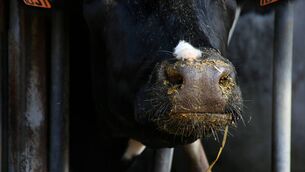Virus alert as lambing and calving difficulties rise
Up to mid-January, 33 clinical cases were confirmed. But reports were increasing of malformed lambs in early lambing flocks in the south east.
The first positive case was in a Co Cork cattle herd in late October. Infection has since been confirmed in foetuses from a further 20 cattle herds and 12 sheep flocks.
They were in Co Cork (16 cases), Wexford (eight), Kilkenny (seven), Wicklow and Waterford (one each).
Blood samples for brucellosis testing from all herds were tested for antibodies to Schmallenberg since mid-November.
This confirmed exposure to the virus in most counties, greatest in the south and south-east, least in the north and west. Blood samples from randomly-selected sheep flocks in the late summer and early autumn had shown little evidence of exposure.
Based on the pattern in the UK and elsewhere, 4%-6% of holdings are likely to be affected by SBV, which is transmitted by biting midges.
In affected holdings, deformities are likely in most cases at 2%-5% of affected pregnancies.
The highest level of problems would be expected in herds with synchronised breeding where large numbers were infected during the critical period of pregnancy late in 2012.
Deformed lambs or calves can be tested for the presence of virus. Or blood or milk samples can be tested for cow or ewe exposure to SBV.
Midge control measures are generally impractical except for valuable breeding stock.
*More information: www.agriculture.gov.ie










